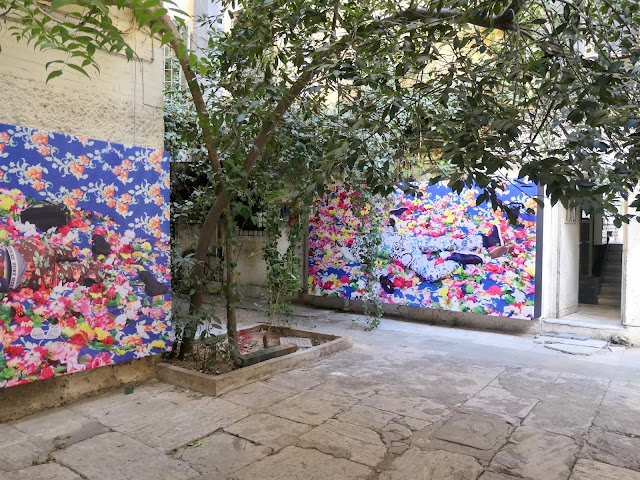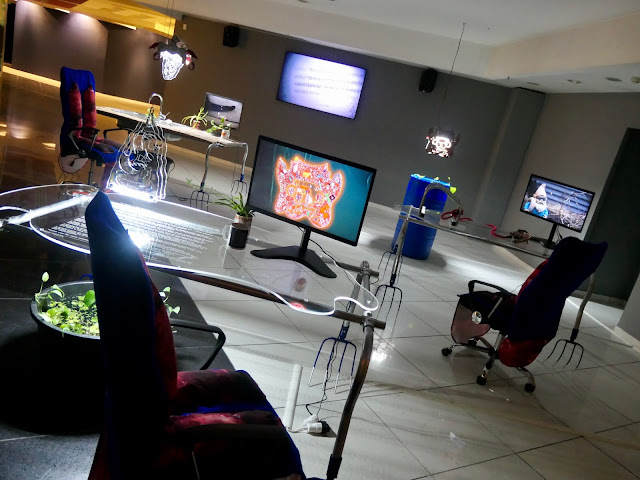Art-fair fatigue 2: Athens Biennale
On my way back from Basel to Naxos to continue my holidays, I had a day to while away in Athens before the ferry. As it happened, it was the opening day of this year's Athens Biennale, so I went along to take a look.
This year is the Biennale's seventh 'edition', called Eclipse and co-curated by Omsk Social Club and Larry Ossei-Mensah, under the artistic direction of Poka-Yio. It's centred on three disused locations, all in the heart of Athens, between Omonia and Syntagma.
The main space is a former department store, Fokas, that shut down as a result of the economic crisis in 2013.
The installations continue across the street in a totally different building, Athens' first post-independence courthouse, dating from the 1830s. From the looks of it inside, the building must have been practically a ruin. But it's been renovated, with the rough stone walls left bare and new, cement staircases with contemporary steel handrails. The Biennale is the first event to take place there since the renovation.
The third space is an abandoned office building of indeterminate period, where some of the offices still have desks, chairs, computers, folders and papers dessicating under a layer of dust.
The installations raise interesting questions about the relationship between artworks, the places they're installed in, and how. Clearly, when an exhibition is cleverly curated in a striking location, this has a potentially positive impact on the art, throwing it into greater relief. But equally clearly, in such a situation, work not strong enough to make its own 'counter-impact' risks being reduced to little more than a decorative detail in the overall scheme.
Having shopped at Fokas myself, I (like many visitors, I guess) was fascinated to see it empty and functioning as an exhibition space, and especially intrigued by the ambiguity between what was left over from the store and what had been added by the curators. Was that brightly-coloured paintwork part of the original children's department, or freshened up for the show? Were the mirrors already there in the store, for customers to try clothes on, or brought in for effect? Were those photos over the stairs fashion shots from 10 years ago, or artworks?
Then, in the old courthouse, were the dark rooms we visit, with their stone walls, cement floors and iron grilles, once prison cells? It felt that way. And what were those eerie noises haunting the dusty stairways and lift cages of the office building?
Bravo to the curators, but sometimes - not always - I felt sorry for the artists, struggling to make their presence felt against stiff competition from their surroundings...



















Comments
Post a Comment